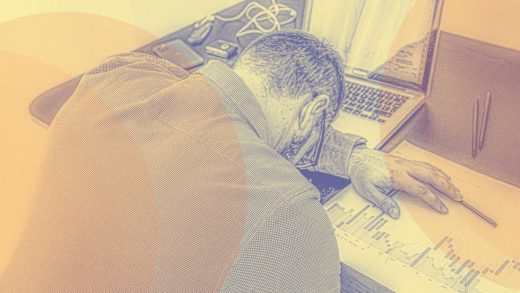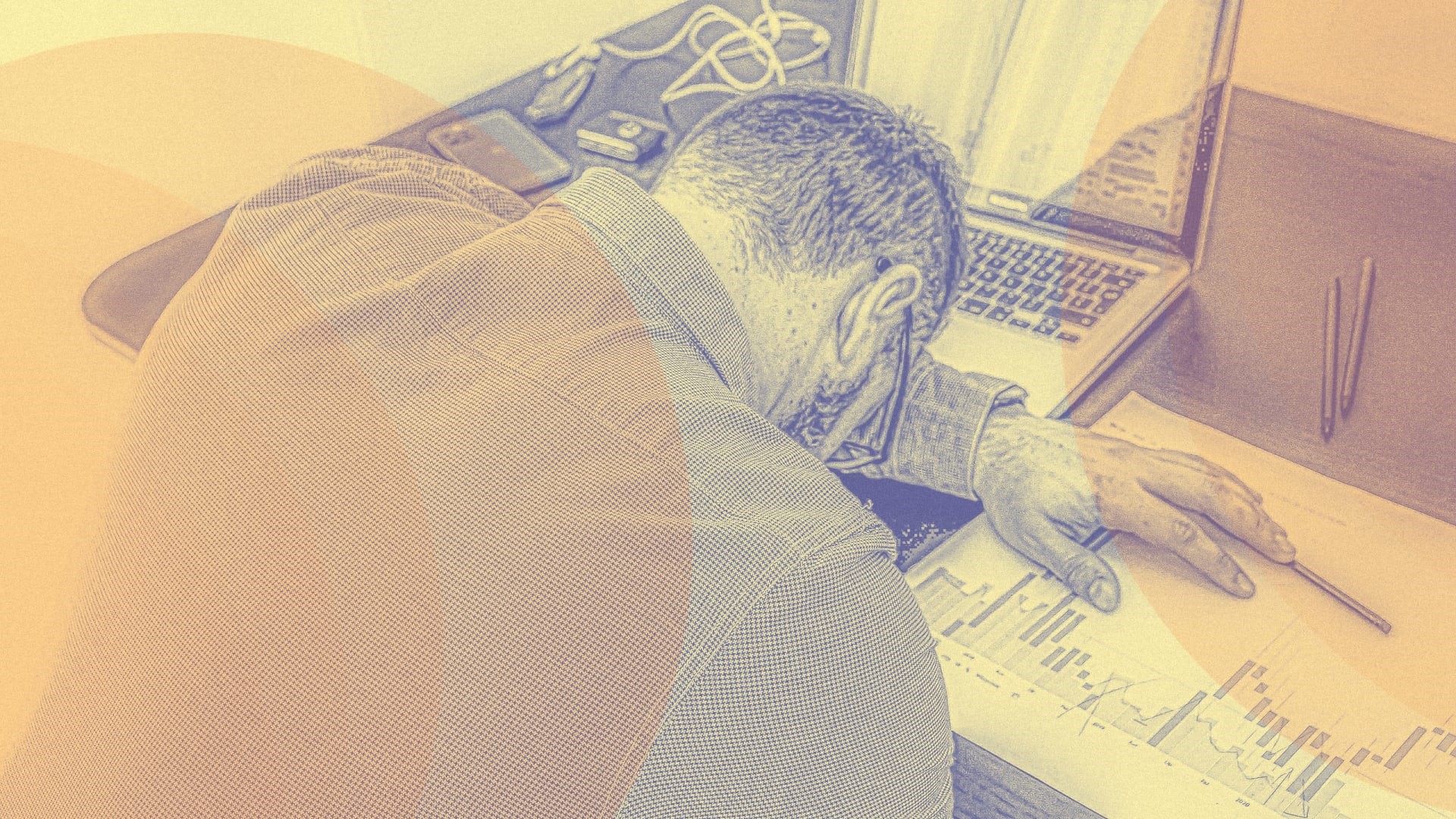Almost 18 million people have Long COVID. Here’s how to make your work more inclusive
Almost 18 million people have Long COVID. Here’s how to make your work more inclusive
Supporting inclusion for workers with Long COVID requires rethinking many long-standing practices. But it can—and must—be done.
We often talk about the impact of COVID-19 on workplaces during the height of the pandemic as if that impact is over. But it is far from over. In the U.S. alone, nearly 18 million people are grappling with Long COVID, and 65% of them are working, even if some had to make adjustments to hours and tasks.
The impact on individual lives, the workforce, and the economy is tremendous, and we have to keep learning to deal with it. Just as many organizations learned during quarantine that much more flexibility in the workplace is possible than previously thought, many will learn that much kinder and more inclusive cultures are possible. And organizations will also learn that flexibility and inclusion are not just possible, but profitable.
Long COVID is a Full-Person Condition
Long COVID can impact the whole person, with symptoms ranging from mobility problems (due to muscle weakness, dizziness, and shortness of breath) to depression, anxiety, and difficulty focusing. It is associated with grief and reevaluation of life’s values and priorities.
While fatigue, cardiac, and respiratory issues often come to mind when thinking of Long COVID, its neurological and psychological effects are just as profound. This makes Long COVID both a chronic illness and a form of acquired neurodivergence—a significant difference in neurobiological functioning. Thus, models developed for neuroinclusion at work are just as relevant as an understanding of physical disability.
Supporting workers with Long COVID requires rethinking many long-standing practices—critically, the way organizations view disability inclusion, and the way organizations view employees, period. It requires understanding and including people much more holistically.
Inclusion > Accessibility > Accommodations
In many workplaces, disability inclusion is equated with accessibility and accommodations. However, neither specific accommodations (e.g., providing an employee with limited dexterity speech-to-text software) nor accessibility (e.g., ensuring that buildings have ramps to support wheelchair users, but also many others) guarantee inclusion. Coworkers may still make rude comments about those who need accommodation, and managers may still assign them tasks well below their qualifications and exclude them from promotion considerations. Inclusion requires that there is no discrimination or unfair barriers. Inclusive systems support all.
Many specific accommodations for employees with Long COVID are listed in this article I coauthored with Katie Bach and Beth Pollack. But to go beyond accommodations, organizations must build systems for holistic inclusion that support a whole person, body and mind, as outlined in my book, The Canary Code: A Guide to Neurodiversity, Dignity, and Intersectional Belonging at Work. This holistic inclusion acknowledges the complexity of Long COVID and honors the complexity of human beings.
Social Inclusion: Opt-In, Opt-Out, no-Judgement Culture
Most of us have suffered through “mandatory fun” events in the workplace. The happy hour where some smile through exhaustion while others worry about their kids. The team-building retreat that leaves introverts socially drained and people with back problems in pain. For people with Long COVID, these aren’t just annoyances. They’re barriers to employment. The extra energy simply is not available.
True social inclusion is an opt-in, opt-out culture for social events. Want to engage? Great, we will make sure that events are accessible. Need to conserve your energy? No judgment. Virtual options? Sure. Sometimes inclusion is less about participation and more about permission to not participate. When we empower workers to choose how they engage, without judgment or “consequences,” we build true social inclusion that benefits everyone.
Cognitive Inclusion: Less Hustle, More Flow
Long COVID often causes cognitive difficulties—brain fog, memory glitches, and a struggle to multitask which, like many Long COVID symptoms, can come and go, and be exacerbated by stress. Of course, Long COVID is much more than “just stress.” And yet, some degree of cognitive struggle, even if less extreme, can also stem from the work culture overly fixated on the hustle, along with a rigid, “one-size-fits-all” model of working.
This means organizations have an opportunity to improve the cognitive environment by focusing on better work organization. Here are two crucial ways to do this:
- Less Hustle, More Flow: Fixing the hustle-and-juggle pressure and overload will help everyone, including those with Long COVID, other conditions, or stressful life situations. It is also likely to help productivity. Studies show that multitasking does not work, so why not get rid of it? Evidence-based work organization calls for focused rather than fragmented time—single-tasking helps people experience flow and have more done. True productivity calls for less frenzy and stress.
- Flexible Work Patterns: We all have different patterns of best performance. Some work best in short, Pomodoro-type segments with frequent short breaks. Others need longer stretches of focused work time with longer breaks. Slicing everyone’s time in one-hour segments does not serve anyone’s productivity. Cognitive inclusion in work organization calls for limiting meetings to specific days and times to reserve significant periods of time for employees to work with their best productivity rhythms. While beneficial for all, this can be crucial for those with Long COVID who may need extra flexibility to work with limited and fluctuating energy.
Cognitive inclusion supports productivity, but to take full advantage of it, an organization may need to refocus performance evaluation more on the outcomes of work, rather than focusing on hours spent working or “being seen.” That’s one of the key principles of neuroinclusion.
Emotional Inclusion: Human First
Depression, anxiety, and grief often accompany Long COVID, and sadly, many employers have traditionally dealt with emotion by telling employees to “leave it at home.” Many organizational cultures have narrow, prescriptive norms of “professional = not emotional” while others expect the emotional labor of “faking happy.”
That lack of emotional inclusion—cultural support for emotional authenticity—can make even healthy employees sick, and it’s an energy drain that those with Long COVID and many other disabled, chronically ill, and neurodivergent people can’t afford.
Normalizing a broader range of authentic emotional expression, from happiness to sadness, supports individuals and groups in truly dealing with difficult situations and building collective resilience through inclusive practice. An environment where saying, “I’m not okay today” is met with empathy, not eye rolls, relieves the pressure and allows people to process emotion in a healthy way, while suppression can make negative emotions intensify.
Emotional inclusion is not about cheesy wellness posters or even “employee assistance programs.” It is about a culture of normalizing well-being check-ins, mental health days without guilt, emotional inclusion training for all managers, and shifting a perspective on employees from “workers” to “humans who work.” And humans have feelings.
Physical/Sensory Inclusion: Redefining the Workspace
Long COVID throws physical and sensory curveballs that aren’t immediately obvious to observers, but significant. Sensory sensitivities leading to an overload in reaction to bright lights or loud noises can derail an employee’s entire day. While mobility issues may not be apparent, dizziness, pain, and crushing fatigue can make the trip to the printer feel like a marathon, and navigating two steps with no railing life-threatening.
We need to design workplaces for an expanded definition of accessibility. A ramp in the back of the building is not cutting it. Organizations should involve disabled and neurodivergent employees in an accessibility audit and make sure to heed their input. Easy-open doors, easy-access elevators, adjustable lighting, sound control, and ergonomic workspaces aren’t luxuries; they’re essentials. Disability is not rare or limited to specific populations. Someone sneezing on a plane, a bug bite, or a sports accident can make anyone need accessibility at any time.
And, yes, remote work is an important part of making work accessible. For many employees managing physical symptoms of Long COVID, the option to work fully or mostly from home can be the difference between having a productive career or not being able to work at all. It also goes a long way in preventing the risk of reinfection—a survival essential for many with Long COVID, and a great benefit to all.
Supporting employees with Long COVID with remote work and other forms of flexibility helps create a more positive work environment overall, as illustrated by a French sports retailer, Decathlon France. Decathlon France also expanded its efforts to support holistic inclusion by helping educate employees and the society at large about the physical and psychological effects of Long COVID and to promote inclusion in all areas of life.
This approach had direct positive effects on employees. As Mylène Rahel Damamme, Decathlon’s ESG & Sustainability Reporting Director, shared: “The flexibility of teleworking/remote work, combined with the possibility of working from home on days when my symptoms are more severe, has enabled me to reconcile my health with my professional responsibilities. This approach, supported by my company’s diversity and inclusion policy, enables me to continue and not give up my professional plans and desires!”
Long COVID has altered many human lives. Organizations may ignore this reality, or they may create environments that are more inclusive of Long COVID and other chronic illnesses, while being more inclusive and kinder to all.
ABOUT THE AUTHOR
(10)



